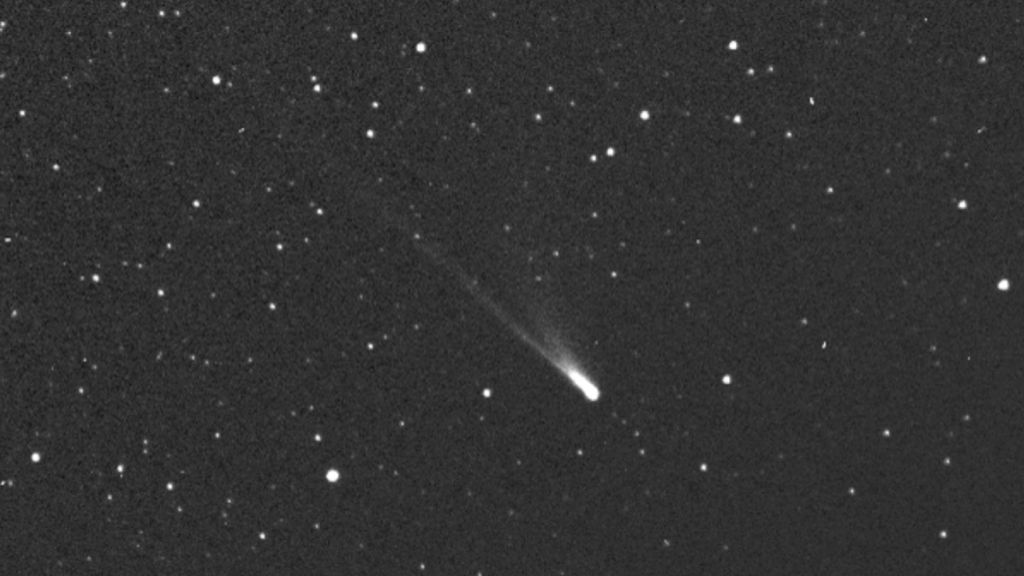More good news for the European Space Agency’s Rosetta mission: the comet-chasing spacecraft has been given an extra nine month lease on life. (The bad news is that it will end with Rosetta’s inevitable demise, likely smooshing the orbiter right into the comet surface.)
ESA announced today that it will extend the mission, which has an orbiter currently circling Comet 67P/Churyumov-Gerasimenko, until the end of September 2016. It was originally only funded to December 2015, but the longer mission will allow scientists to take more measurements through the comet’s ongoing journey.
Videos by VICE
“Ultimately, it’s just to squeeze every last drop of capability out of the mission,” project scientist Matt Taylor said in a phone call.
The comet is set to make its closest approach to the Sun this August, and Rosetta has to hang back a bit to stay safe. It’ll be able to get closer again in the extended timeframe.
ESA/Rosetta/NAVCAMTaylor said that one compelling reason for prolonging the mission was to facilitate ground-based operations. “If we operate next year we have much better ground-based coverage,” he said. Ground-based telescopes have just begun to be able to spot 67P and the location of the comet next year will make for better observation opportunities. Nine months makes sense because after that, Rosetta will once again be heading too far from the Sun to operate all its instruments and will start running out of fuel.
The extension will also mean scientists can track the full “summer” of the comet, which is headed for its perihelion (the moment it’s closest to the Sun) on August 13. Taylor explained that, for a relatively short period in its “summer,” the usually dark southern side of the comet sees sunlight. The longer mission will allow for observations of the comet’s activity not only building up to that crescendo but coming out of it too.
“Being able to investigate how that changes—what the impact of sunlight and going into darkness is on that part of the comet—is very important, again to further our understanding of how the comet works,” he said.
And while Rosetta continues on its way, it may be able to actually locate Philae, the lander that hitched a ride on the orbiter before being dropped onto the comet in November. Philae went into hibernation a few days after landing but recently woke up, though ESA hasn’t managed to establish a stable link with it yet.
“On the way out, we have a much better idea of how to ride the bike, as it were, so we might want to be a bit more daring.”
The lander itself will likely not have enough solar power to keep going into next year (though “from a dramatic perspective one must never say never,” according to Taylor), but Rosetta should be able to get a picture of the lander on the comet surface as it draws closer in 2016.
Another benefit of keeping going after the comet’s perihelion is that, this time, the researchers know more about the comet than when Rosetta went into orbit in 2014, and so can focus on different things. “On the way out, we have a much better idea of how to ride the bike, as it were, so we might want to be a bit more daring,” teased Taylor. This could mean getting closer, or going more on the comet’s “night” side.
Rosetta’s most risky move is likely to be its last: ESA is still touting ending the mission with Rosetta actually landing on the surface of 67P. Rosetta probably won’t come out of this scenario very well—but it’ll be able to make the closest possible observations in its final moments.
That’s not confirmed yet and Taylor said the details would need to be fleshed out, but he conceded that even if they aimed for a “soft landing” it’d be more like a crash. “Unlike Philae, Rosetta’s not designed to land on the comet, so anything’s going to be a hard landing in principle,” he said, pointing out that while Philae is only one metre across, Rosetta is 32m tip-to-solar-panel-tip.
Regardless how it ends, the mission extension will allow for a lot more measurements to shed light on comets and their role in the early solar system. Fingers crossed it goes out in style.



